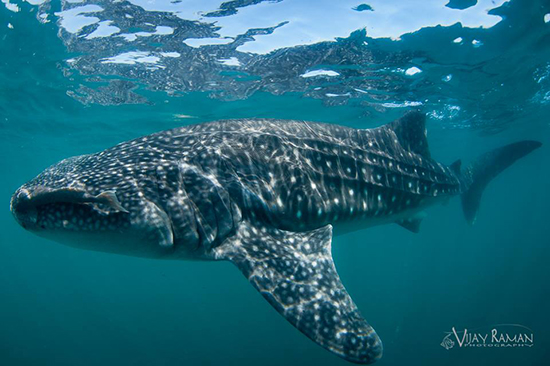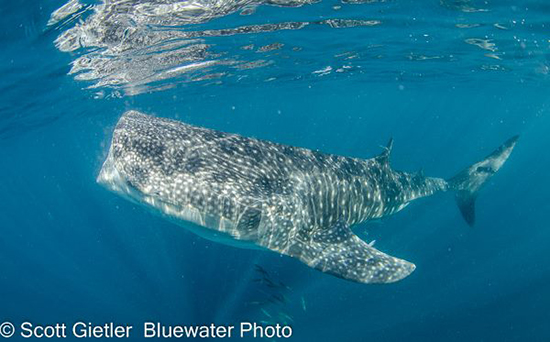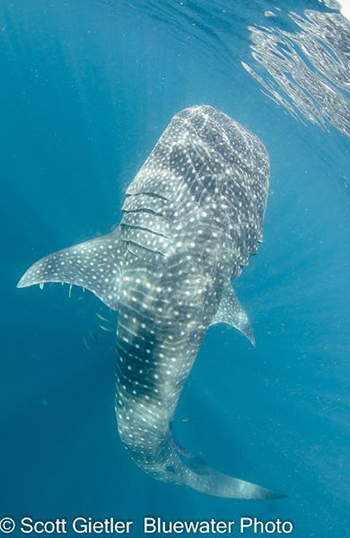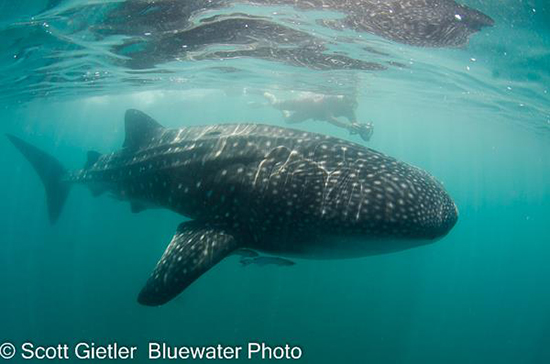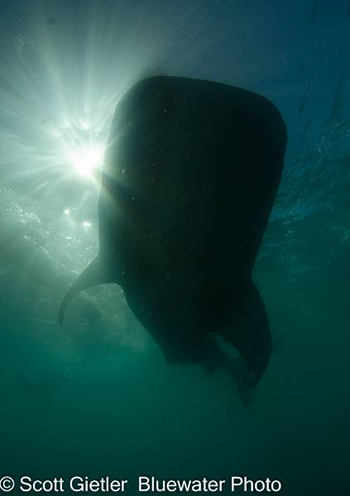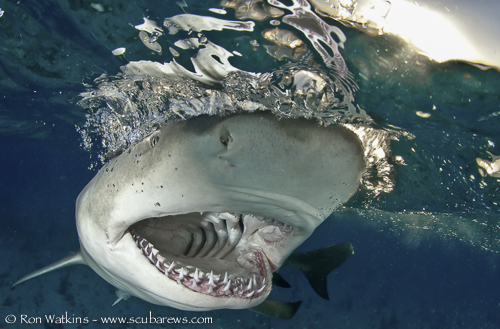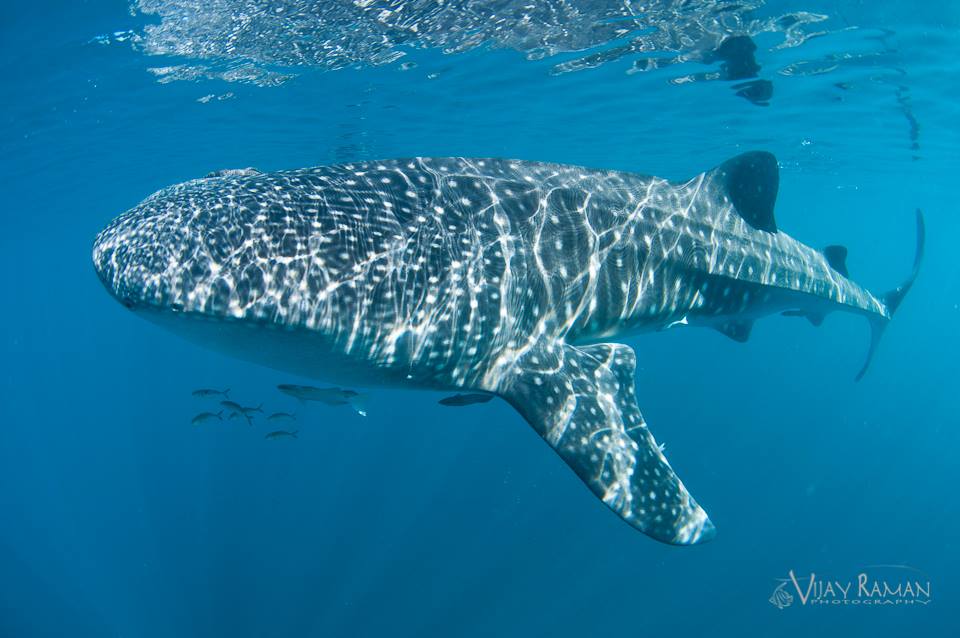
Swimming with whale sharks is a special experience – one that can be a relaxing swim, a heart-pounding adventure surrounded by the largest fish in the ocean or a heart-pounding workout swim alongside one of these massive fish.
Divers can swim with whale sharks around the world, inlcuding destinations like Mexico’s Sea of Cortez and Isla Mujeres, Ecuador’s Galapagos Islands, Honduras’ Utila, the Philippines’ Cebu, Indonesia’s Cenderawasih Bay and several other dive locations.
UWPG publisher Scott Gietler and co-trip leader Vijay Raman recently returned from Bluewater Photo’s La Paz workshop with some amazing images, so let’s explore some of the photo techniques they used to capture these images as well as some tips for those shooting video.
1. Use a Fisheye Lens
Whale sharks are large – actually the largest fish in the ocean! You’ll want to be close to the subject in order to capture as much detail as possible, and this means using a lens with wide field of view. Of course, if the whale sharks are swimming they could change direction at any moment, so pay very close attention to their movement to avoid touching them or being run over.
DSLR
Fisheye lenses like the Tokina 10-17mm will be the most popular, especially on crop sensor cameras. Full frame shooters can use the Tokina or look into the Sigma 15mm or the Canon 8-15 circular fisheye.
MIRRORLESS
Underwater photographers using Olympus E-PL and OM-D cameras will opt for the popular Panasonic 8mm fisheye lens. This lens is our top recomendation for wide-angle shooting on mirrorless cameras.
COMPACT CAMERAS
Compact camera users will want to shoot whale shark photos with a wide-angle wet lens that mounts to their housing port. Our top recommendation is the UWL-04 fisheye lens. Remember that once you put the camera and lens in the water, remove the lens to “burp” out the bubbles trapped between the front of the housing port and the wet lens. Otherwise, you’ll see these bubbles in all of your photos.
GOPRO
GoPro shooters, whether using the Hero 3, Hero 3+ or Hero4 will be able to record great underwater photo and video of whale sharks without any additional lenses. Since you’ll be swimming on the surface with the whale sharks as they feed, no GoPro filters are needed. many find that using a selfie pole can help produce great photo and video. We recommend the SeaLife Aquapod telescoping monopod.
A fisheye lens on crop sensor DSLR allowed Vijay to get close to the whale shark without cutting off the tail of the big fish.
2. Use Time Value Exposure
DSLR, Mirrorless and Compact shooters have a number of shooting mode options to choose from. We recommend using time value and closely monitoring your exposure meter before snapping each shot.
When shooting whale shark photos, you have more leeway with a variable aperture. For example, you might not notice much difference between f2.8 and f4 (compact) or f4 and f5.6 (dslr). But if shooting in aperture value you will notice the difference between a shutter speed of 1/15 and 1/30.
Of course, shooting manual is an option, especially with variable ISO (DSLRs that can handle higher ISOs). Just know that the light changes with every repositioning of the camera!
This whale shark was captured in sharp detail by ensuring a shutter speed fast enough to freeze the action.
3. Shoot in Ambient Light
When swimming with whale sharks, you will want to be as mobile and nimble as possible. And, since the whale sharks are feeding at the surface you can shoot entirely with ambient light. So leave the strobes and video lights on the boat or at the resort. You’ll be able to swim faster, maneuver more quickly and have less settings to worry about.
Sun rays penetrate the water, lighting up the whale shark and creating a reflection on the surface. No strobes or video lights needed.
4. Position Yourself Away from Others
One of the keys to good underwater photo composition is to eliminate distracting elements from the frame. If you’re on a boat with a few other divers, make sure to position yourself so that all your dive buddies are not in the background. Sometimes, this can make very cool photos, but more often than not, your whale shark will look like it has arms and legs growing out of its head.
A perfect example of great framing of a swimmer and whale shark. If the swimmer had been cut off by the whale shark (both shapes merged), the scene would leave the viewer feeling unsettled.
4. Remember to Shoot Silhouettes
Shooting sideways and down onto whale sharks in ambient light creates beautiful photos, but so does shooting up at the whale sharks. Not only can you create beautiful silhouettes, but you can create nice sunbursts as well.
To capture a sunburst like this, make sure to stop down your aperture (f8 on compact, f18 on mirrorless, f22 on DSLR) and use a fast shutter speed.
Shooting up can help create beautiful silhouettes and sunbursts.




